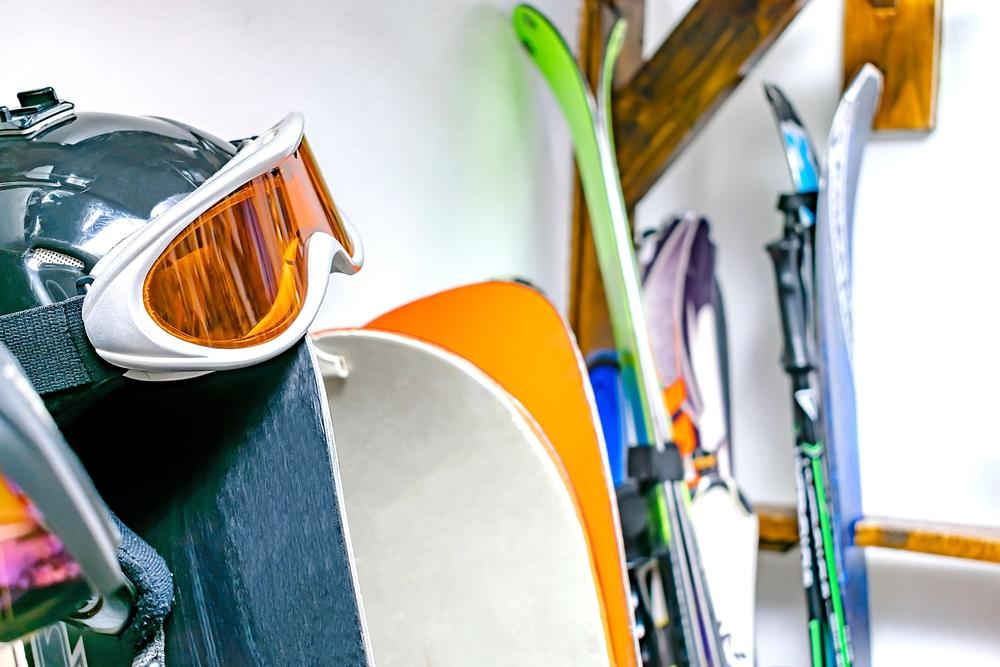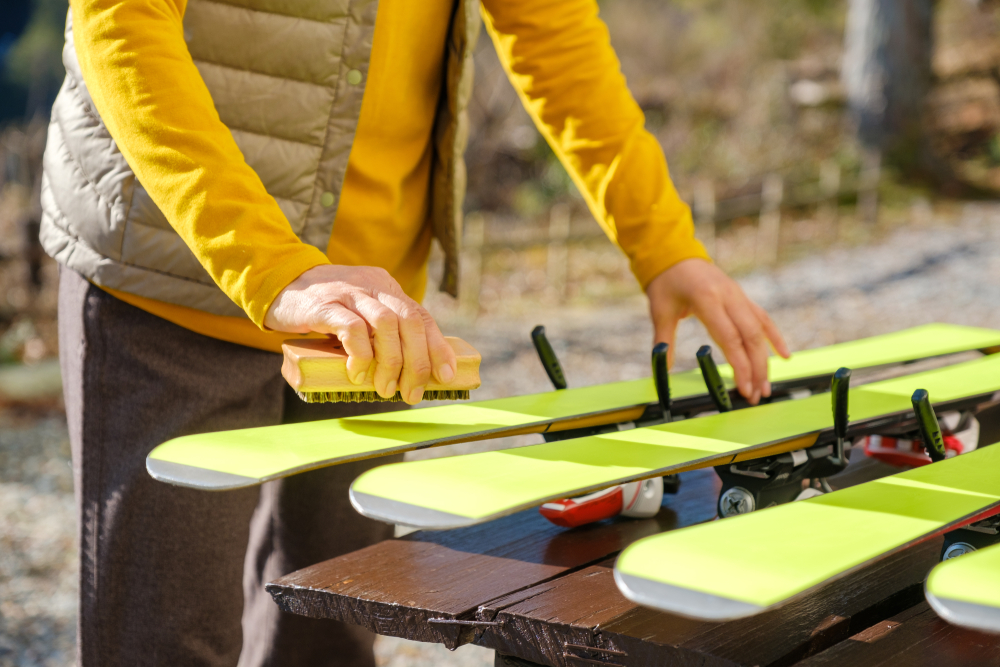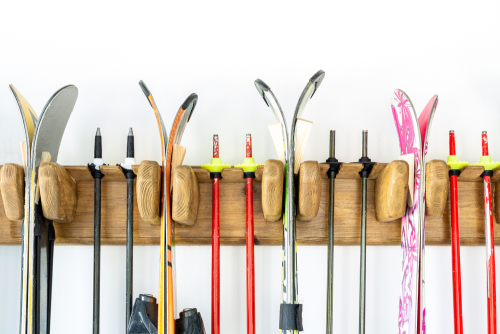
Imagine spending the summer tucked away, patiently waiting for the moment when you’ll once again fulfill your purpose and bring excitement to those around you. You might not have any use for your skis with the beach or a backyard barbecue calling your name, but the off-season is the best time to show your equipment some much-needed love and attention. Most resorts don’t open until early November, giving you ample time to inspect, clean and polish your essentials.
Find cool ski gear to round out your supplies to ensure you’re ready for your first run of the year. A little common sense and elbow grease will extend the life and quality of your equipment, so you can spend more money getting to the lift and less on rentals and replacements. Discover helpful tips on how to take care of your skis during the off-season
Make an Inventory Checklist
Locate and inspect everything you need to hit the slopes and replace any damaged items. Skis can take a beating after a long season or riding on the roof rack of your car. Look for rust and worn-down edges that can compromise performance. Most pairs will start to deteriorate after 100 to 125 days of use.
Inspect your boots, gloves, jacket and winter gear. Watch for holes and weak spots that could break your waterproof outer seal. Put the gear on and check the straps, ties and laces to ensure a proper fit. Use a toothpick or tweezers to remove pebbles and dirt from your boot treads.
Do the same for your safety equipment, including your helmet, goggles and pads if doing jumps. Check for cracks and dents in the outer shell. Try them on with the straps attached. Consider purchasing a ski helmet communication headset to communicate wirelessly with your companion on the slopes. It connects automatically via Bluetooth to keep the conversation going.
Polish, Clean and Wax
Clean the ins and outs of your equipment. Some items may still harbor debris from your last run, and they can accumulate dust after sitting in storage. Use a degreaser and a dry rag to remove tough stains and wax from the previous year. You can also buy a specialty ski cleaner that hydrates the base for a deeper clean. Run a gummy stone or file over the skis to remove rust and caked-on dirt without grinding down the outer edges.

Wipe down the inside of your helmet with a non-toxic cleaner. Use a soft cloth when cleaning the outside of the visor or your goggles to avoid scratching your field of view. Caution: Wiping the inside lens or visor can damage the anti-fog coating. Gently blot the inside of the lens with a dry cloth if it needs to be cleaned. If you wear a full-face helmet, use Q-tips to remove debris from the vents so you can breathe easier on the slopes.
Launder your winter clothing according to the manufacturer’s guidelines. Mixing them with non-compatible fabrics and using certain chemicals and products can reduce their waterproof properties.
Apply wax to the skis to hydrate the base and protect the exterior from wear and tear. Let them dry and seal before tucking your skis away for the season.
Ski Storage Tips
Keep all your ski gear together so you don’t have to hunt everything down on the eve of your first trip. Store them in a dry area that’s not too hot or cold. Garages, attics and basements can swelter during the summer without proper ventilation, drying out your skis. It’s best to keep them in the house, such as in your closet or under the bed.

Your skis are best stored upright and flat in a bag to keep dust at bay. Experts recommend putting the bindings on the lowest setting to give the spring a break, but you’ll need to reset them when taking them out of storage. If you feel comfortable adjusting the bindings, mark your current binding settings and put them on the lowest setting to extend the lifespan. Don’t put any weight on the ski camber to retain its shape. Use a non-abrasive strap that keeps the skis together to reduce friction. A padded strap cushions the edges to prevent further sliding.
Use a rubber band or strap to keep your poles together. Slide them into the same bag as your skis. You can also hang your gear on the wall to preserve shelf space, but ensure they are adequately secured to avoid damaging your gear.
Store your safety gear where it won’t fall or drop. If you hang the helmet, avoid putting anything in it so you don’t stretch the straps. Remove the headset from the helmet and store it separately in a dry, room-temperature location unless you use it for other recreational activities.
Final Thoughts on Off-Season Ski Care
Proper care during the off-season is crucial for keeping your skis in top condition, just as it is during the riding season. If you keep them in good condition during the summer, fall and spring, you’ll be ready to hit the slopes after the first snowfall.
